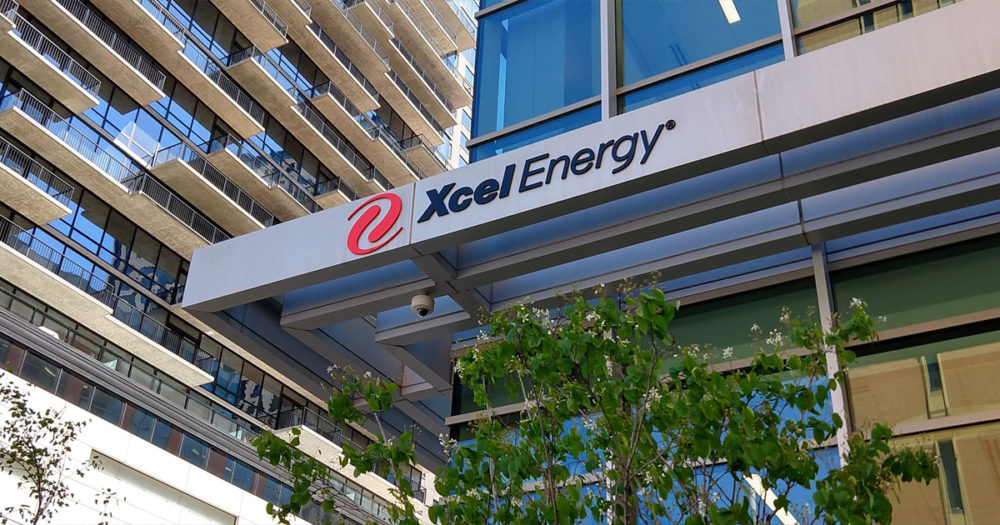This month, the Minnesota Public Utilities Commission is holding a series of public meetings to hear from individuals, communities, advocates, and other stakeholders on Xcel Energy’s plans for Minnesota’s energy future.
Xcel Energy’s proposed 2020-2034 Upper Midwest Energy Plan, also known as an integrated resource plan or IRP, describes how Xcel Energy intends to fulfill its customers’ electricity needs and reduce emissions over the next fifteen years.
The meetings are an important opportunity for consumers and other stakeholders to learn more about Xcel Energy’s proposed plan and to share input to the Commission. For a quick primer on what integrated resource plans are, and why they matter to customer bills and public health, see my blog post from earlier this year.
Public meetings are scheduled for Oct. 21 in Minneapolis, Oct. 23 in St. Cloud, Oct. 28 in St. Paul, and Oct. 30 in Mankato (visit Xcel Energy’s website for the full schedule and location details).
Xcel energy steps forward
Last December, Xcel Energy announced a major goal of achieving 100 percent carbon-free electricity by 2050. The company followed up in May of this year by releasing a proposal to phase out its remaining coal-fired power plants by 2030 and replace them primarily with wind, solar, and energy efficiency.
Xcel Energy’s proposed resource plan tracks these previous announcements and includes:
- Phasing out Coal Plants. Retirement dates of 2028 and 2030 for the Allen S. King and Sherco 3 coal-fired power plants (which, in combination with the company’s earlier proposals to retire the other Sherco coal units in 2023 and 2026, will mark the end of Xcel Energy’s coal burning in Minnesota).
- Solar and Wind. Acquiring at least 3,000 megawatts of utility-scale solar by 2030—which is roughly triple the amount of solar currently installed in all of Minnesota—and adding further renewable resources to the company’s already-planned addition of 1,850 megawatts of wind power by 2022.
- Energy Efficiency. Substantially increasing energy efficiency programs to nearly double the annual average energy savings from the company’s previous resource plan—780 gigawatt-hours compared to 444 gigawatt-hours—reaching an amount equivalent to the average annual electricity consumption of over 8,000 Minnesota households.
All of these are significant and important steps toward reducing carbon emissions and keeping costs affordable for customers.
Questions and issues remain
While Xcel Energy’s plans to retire the last of its Minnesota coal plants—and add large amounts of wind, solar, and energy efficiency—are big steps toward a clean energy future, the company’s resource plan does include additional elements that UCS and other advocates are continuing to examine.
- New Sherco Gas Plant. Xcel Energy still plans to construct a new gas-fired power plant at the Sherco site in the mid-2020s. Despite having legislative approval to build the plant, the company needs to re-evaluate whether it would better serve customers to forego construction due to a lack of need and less expensive alternatives. Additionally, building new gas infrastructure is a risky investment for ratepayers and a step in the wrong direction when it comes to reaching 100% carbon-free electricity and reducing emissions to help avoid the worst impacts of a changing climate to Minnesota.
- Monticello nuclear plant. Xcel Energy proposes to request an extension of the Monticello nuclear power plant’s operating license and run it for at least an additional 10 years (to 2040 from the date of its current license expiration in 2030). Regulators must consider whether the plant can continue to operate safely for that long and what investments are needed to replace aging equipment compared to investing in other low-cost, carbon-free alternatives such as solar, wind, and battery storage.
- Renewables and reliability. Xcel Energy discusses a potential post-2030 need for “firm dispatchable resources” but does not specify what those resources will be in this round of planning. As a result, it’s vital that the current resource plan properly consider the attributes of renewable energy, battery storage, and transmission expansion in providing future reliability needs—both to inform the company’s future resource plans and to avoid premature assumptions that another gas-fired power plant will be needed.
- Equity for communities and workers. We and other stakeholders are examining how Xcel Energy’s plan should do more to ensure sharing of clean energy benefits to low- and moderate-income customers and to provide meaningful options to displaced workers at power plant locations. The plan should also include additional opportunities for growth in smaller-scale solar resources installed on rooftops or located in communities. For more information on these important points, please see the helpful scorecard on Xcel Energy’s IRP developed by environmental and community energy advocates.
What’s next?
Stakeholders, residents, and business owners have an opportunity to make their voices heard on Xcel Energy’s resource plan during this month’s public meetings. And anyone can weigh in Minnesota’s clean energy future by submitting a public comment through January 8th (see this notice for more details on how to submit).
Join us in supporting Xcel Energy’s goal of 100 percent carbon-free electricity and phasing out coal plants with clean energy technologies like wind, solar, and energy efficiency. And join us in urging regulators to ensure that Xcel Energy pursues the least risky and most cost-effective resources to achieve its long-term goals.

